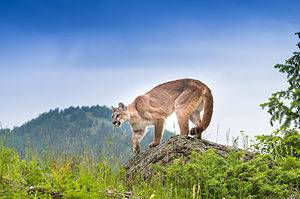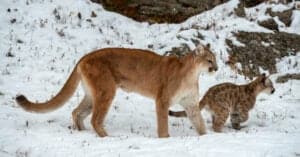Mountain lions are beautiful animals, but they are also highly skilled predators. They used to roam throughout the United States (as well as the rest of the Americas). However, far fewer mountain lions wander in the wilderness these days.
So, if they are not as common as we tend to believe, where do they live? Texas is one state with a sizable population of the large felines. But, before diving into that particular group, it will be helpful to understand more about the cats. Below we will briefly look at what mountain lions are and what types of habitats they frequent. Then we take a deeper look at the mountain lions in Texas.
What Are Mountain Lions?
Mountain lions (Puma concolor) are one of the largest land mammals in the Western Hemisphere. They are relatively slender and typically weigh between 70-170 pounds, though they can grow to as heavy as 225 pounds. The beautiful cats are also quite long. Their bodies range from 3-4 feet on average, with a tail length of up to 3 feet. However, they can grow up to 9 feet long (including their tails).
Conversations about mountain lions can get confusing because they go by so many different names. Which name you know mountain lions by will depend on what region of the country or world you live in. They are often called panthers, cougars, pumas, and catamounts.
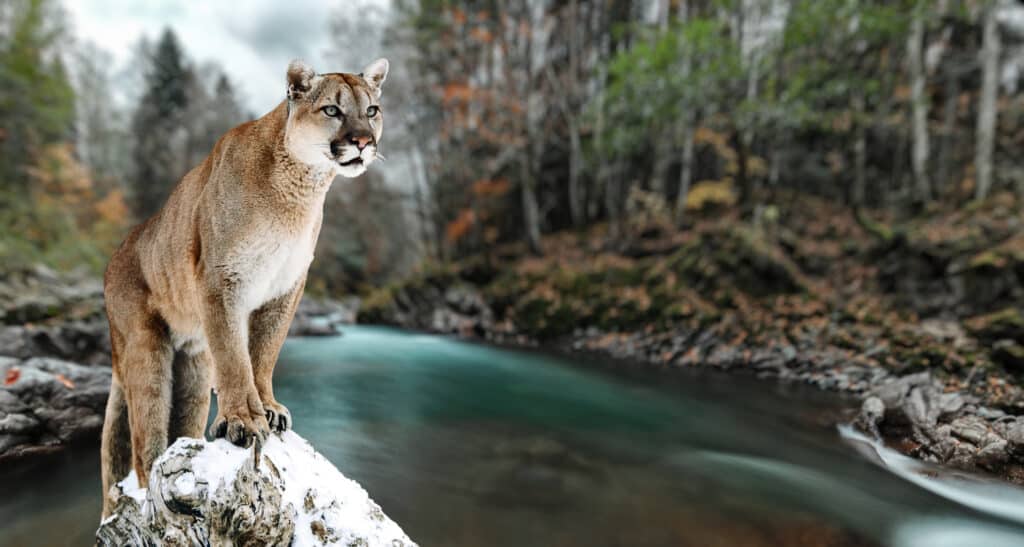
Mountain lions can grow up to 225 pounds and 9 feet long.
©Evgeniyqw/Shutterstock.com
Mountain Lion Habitat
The large cats have an incredibly diverse range of habitats. They are primarily concerned with the nature and abundance of food available. Mountain lions prefer to pursue larger prey, like deer. But they will also hunt smaller animals when they need to. Some smaller prey for mountain lions include coyotes, javelinas, rabbits, and raccoons. While they do not typically hunt livestock or pets, they will not hesitate to kill an unprotected animal.
Mountain lions live in forests, wetlands, deserts, and mountainous regions. You may find the stunning animals wandering in a rocky outcrop at sea level or tucked behind boulders as high as 10,000 feet. They prefer regions with brush, trees, or rocky areas, as those will all easily conceal the stealthy hunter.
These felines are primarily solitary creatures. They come together to mate, and females care for their babies until they are old enough to venture off. Their territory range is quite large, with males covering more ground than females. Adult males are known to roam up to 100 square miles. However, females stick to a tighter territory. They range between 20 and 60 square miles.
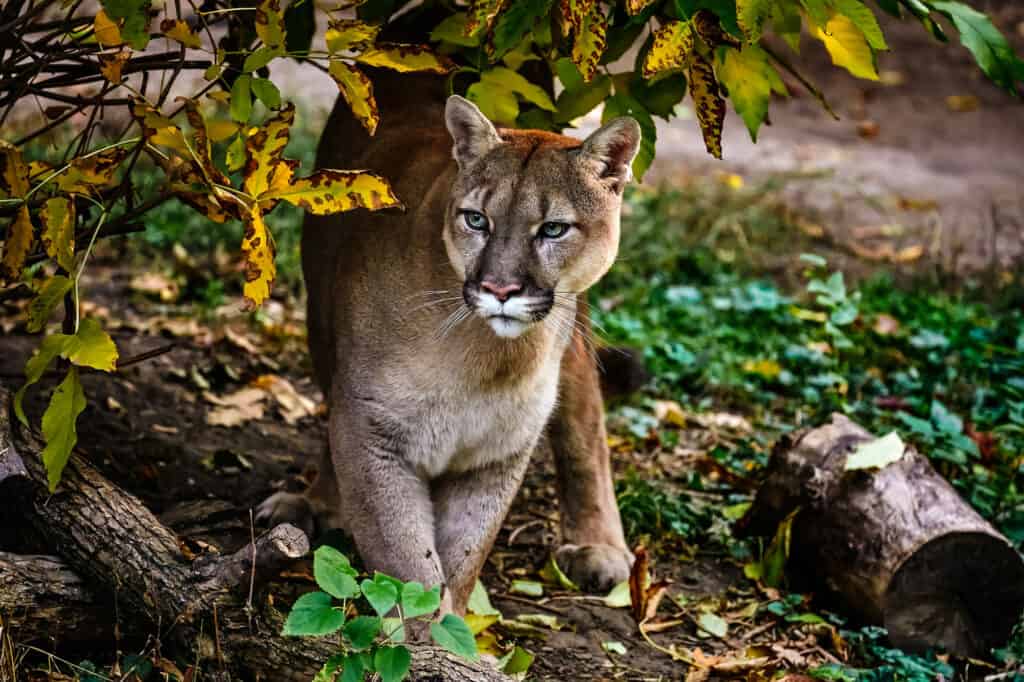
Mountain lions prefer territory with ample hiding places.
©Evgeniyqw/Shutterstock.com
Where Do Mountain Lions Live Around the World?
Mountain lions have the largest distribution of any animal in the West. Historically, they roamed throughout the Americas. There were mountain lions as far north as the Yukon. And as far south as Chile. Mountain lions live in Central, South, and North America.
In the United States, the mountain lion population diminished rapidly in the 1800s due to habitat destruction and significant hunting. These days the cats are only found in about 15 states, one of which is Texas.
Mountain Lions in Texas
These magnificent cats are native to Texas. There was an abundant population when settlers started coming en masse early in the 1800s. They relentlessly hunted mountain lions. Settlers believed the animals were a threat to livestock. As a result, the animal came close to extinction.
However, they were not hunted down merely because of the perceived threat they posed. Many people also prized the cats for their fur. It was a common and popular commodity during the height of the Texas fur trade in the mid-1800s.
The population slowly started to restore itself in the mid-1900s. Officials believe it has returned to a relatively stable and healthy level.
Now Texas is one of the few states in the US with a healthy and consistent mountain lion population. Their primary homes are in parts of the Hill Country, the Trans-Pecos, and the south Texas brushlands. The large cats have also been spotted in some parts of North Texas.
The Mountain Lion Foundation estimates that Texas can safely support up to 6,000 cats due to its vast and expansive open space. But, experts do not believe there are that many in Texas. There is no official estimate of how many mountain lions call Texas home.
Currently, mountain lions have no legal protection in the state of Texas. It is legal to trap or kill mountain lions that are threatening your home or livestock. However, they have not gotten classified by game. So no tags get issued, and there is no hunting season for mountain lions in Texas.
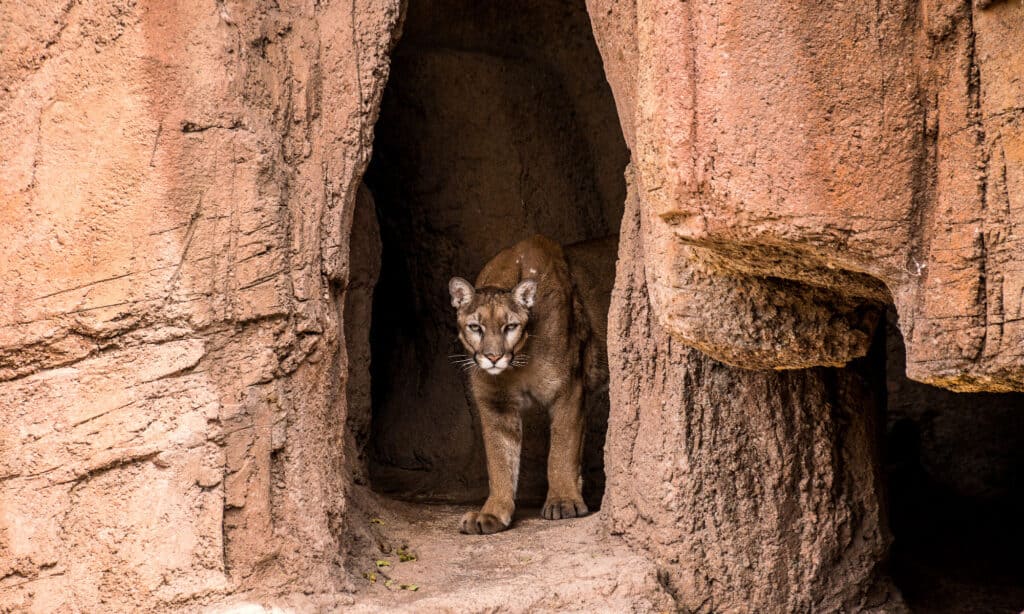
There is a large and stable population of mountain lions in West Texas.
©Susan E. Viera/Shutterstock.com
How to Avoid Getting Attacked by a Mountain Lion in Texas
Since there are a fair number of mountain lions living in Texas, it is imperative to understand proper safety measures. State or local officials will alert hikers and residents when there has been a sighting in an area with trails or parks. The Texas Parks and Wildlife Department works hard to keep track of all mountain lion encounters. So it is best practice to visit their website before heading out.
The chances of getting attacked by a mountain lion in Texas are extremely slim. State officials have only documented four attacks on humans by mountain lions since 1980. And all four of those instances occurred in remote West Texas.
However, it is best to be aware of your surroundings, just in case. So when you venture into mountain lion territory, avoid early mornings and evenings. These are ideal hunting times for the predator due to the low light.
Keep any children or small pets close to you, and do not let them wander off the trail. Mountain lions are stealthy, and you will likely never see them until they want you to see them.
If you encounter a mountain lion, pick up your smaller companions to make them appear larger. And you also want to make yourself look as large as possible. Raise your arms into the air to accomplish that. Slowly walk backward away from the mountain lion and remain as calm as possible. Never turn your back on a mountain lion. And never run from one, as this action will trigger its predatory instincts. In a rare and unfortunate event of an attack, always fight back as hard as you can.
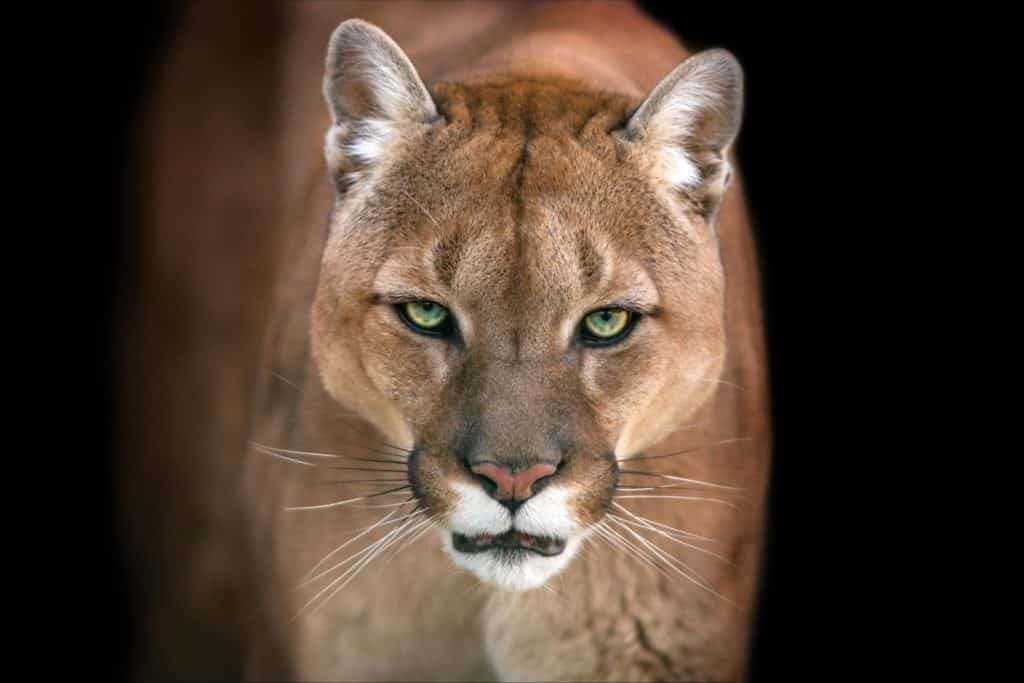
Never run from a mountain lion.
©Kwadrat/Shutterstock.com
The photo featured at the top of this post is © iStock.com/SandmanXX
Sources
- Texas Parks and Wildlife / Accessed December 14, 2022
- Texas Parks and Wildlife / Accessed December 14, 2022
- Mountain Lion Foundation / Accessed December 14, 2022
FAQs (Frequently Asked Questions)
Are there mountain lions in West Texas?
Yes, there is a sizable mountain lion population in West Texas. Wildlife officials believe the group has remained stable due to an influx of new mountain lions from New Mexico and Mexico.
Are there pumas in Texas?
Puma is a common term referring to mountain lions (Puma concolor). There are approximately three areas in Texas where mountain lions live. They live in South Texas brushlands, West Texas, and Hill Country.
Do mountain lions attack humans?
Mountain lion attacks on humans are extremely rare. However, they do happen occasionally. Most attacks get triggered by an unknowing person entering the cat’s territory or coming too close to a cub. But, sometimes, unintentional human behavior triggers the predatory instinct. So if you ever encounter a mountain lion, do not run and do not turn your back.
Thank you for reading! Have some feedback for us? Contact the AZ Animals editorial team.




